This Wednesday's watermark comes to us once again from the Islamic Manuscripts Collection - one of the papers in Isl. Ms. 337 to be exact. This manuscript was copied in 1789 for the Qājār ruler Fatḥ ʻAlī Shāh (1769-1834, r. 1797-1834), apparently before his ascension to the throne.
The watermark features the full figure of a lion in stride with the front right paw raised and all others on the ground. In heraldry, this position (or attitude) is referred to as passant. Further, the lion's head is facing the viewer, in position guardant.
Many such lion passant guardant watermarks were employed by European papermakers, particularly in the region around Venice in the late 18th and early 19th centuries where they often reflected the Lion of Saint Mark. [1] Eineder includes numerous examples, mostly from Venetia and Lombardy. [2]
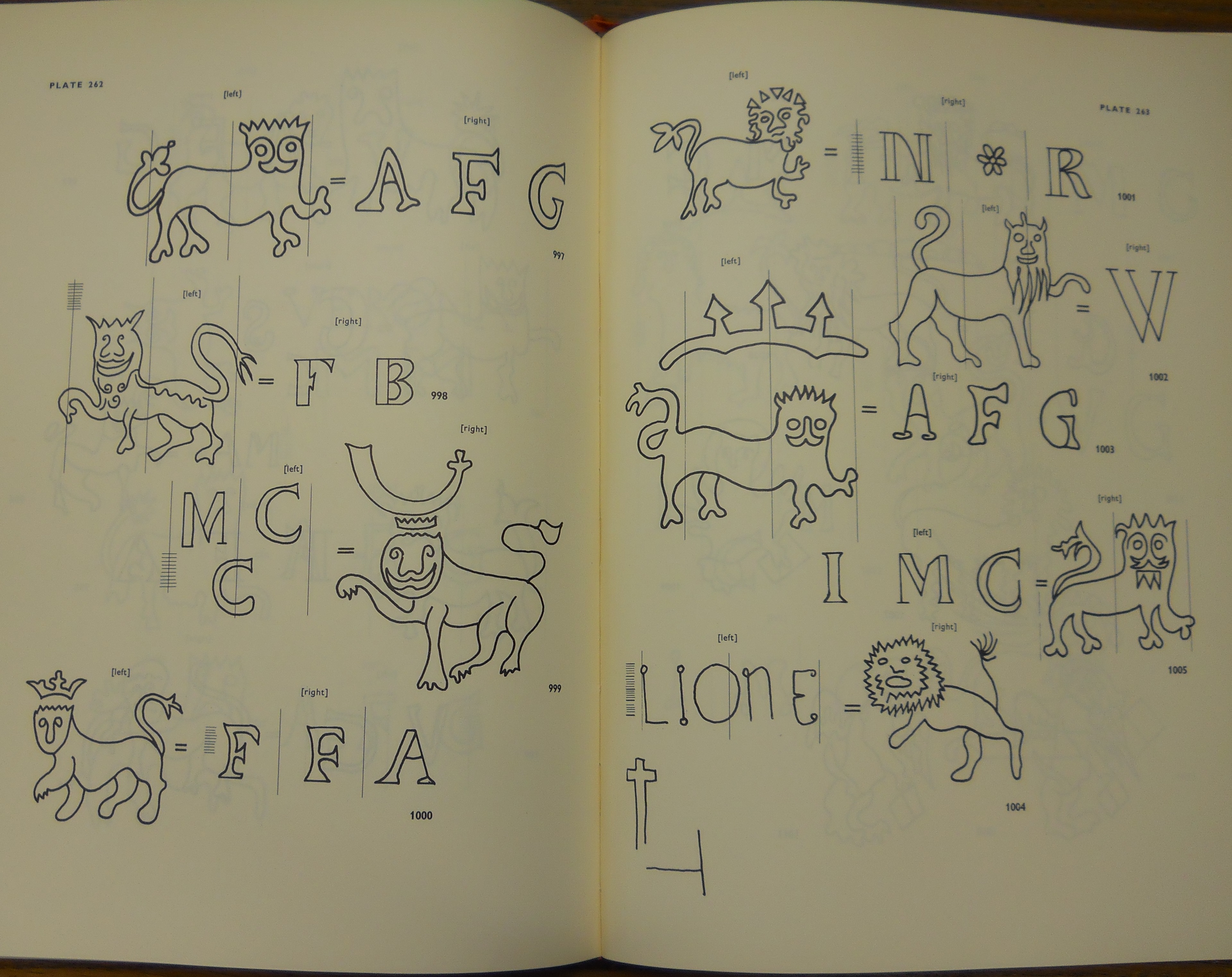
Lion passant guardant watermarks in Eineder (Plate 262-263)
The lions may appear with or without an additional motif (such as wings, nimbus, crown, flag, bit of ground or grass, etc.) and with or without a companion mark (such as initials, diadem, crossbow, bird, etc.). The facial features also vary in definition and demeanor, with many appearing to smile. [3]
The lion passant guardant in the mark in Isl. Ms. 337 certainly seems to have a grin on his face, as does the lion featured in the watermarked paper of another manuscript, Isl. Ms. 866 (copied ca.1790-1807). This mark appears in the gutter near the tail edge of the text block and so requires a careful look to spot it.
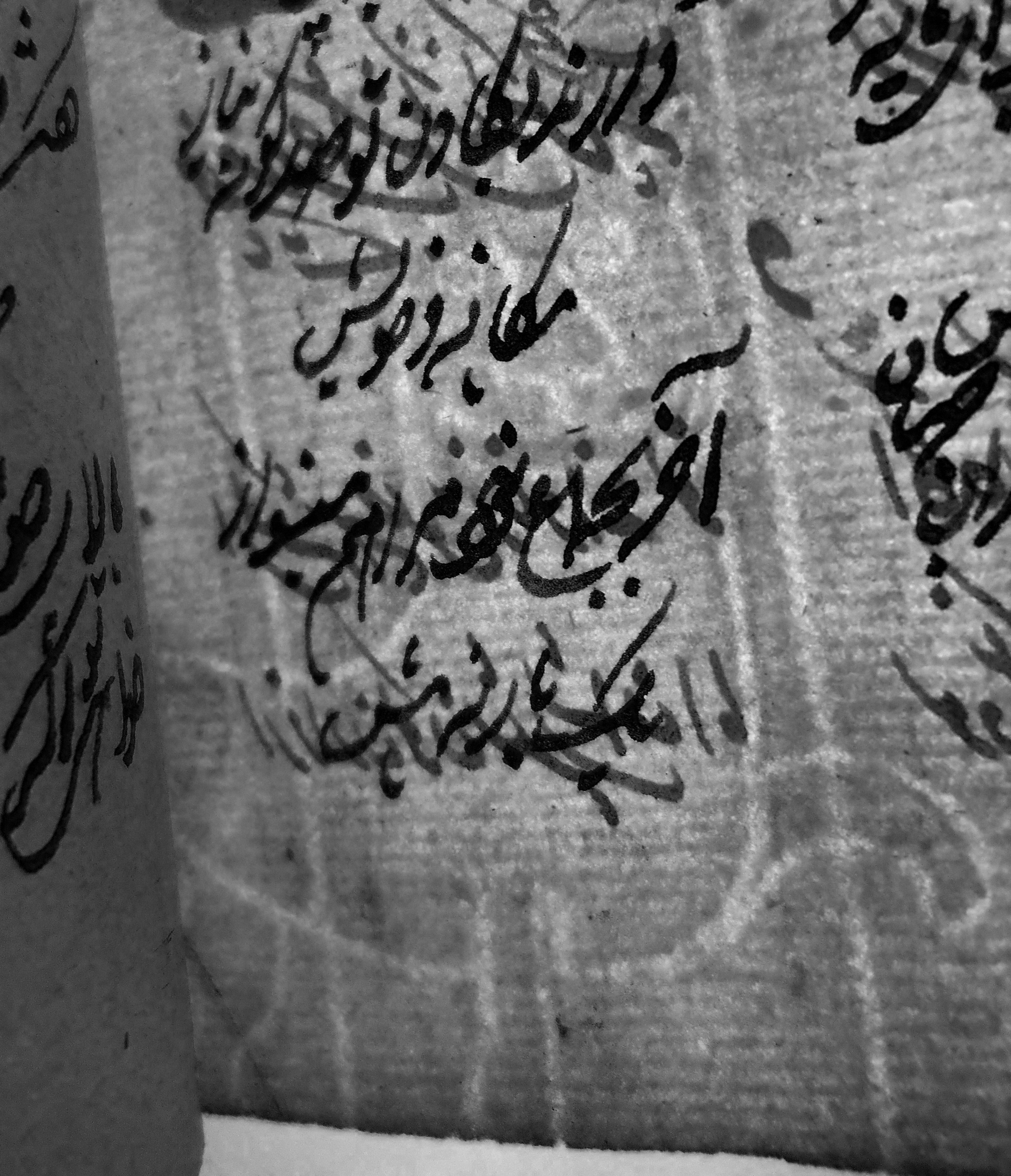
Smiling lion passant guardant watermark visible near the gutter in Isl. Ms. 866, p.438
This mark resembles one included by Nikolaev in his Watermarks of the Mediaeval Ottoman Documents in Bulgarian Libraries, no. 924, also dated 1807. [4]
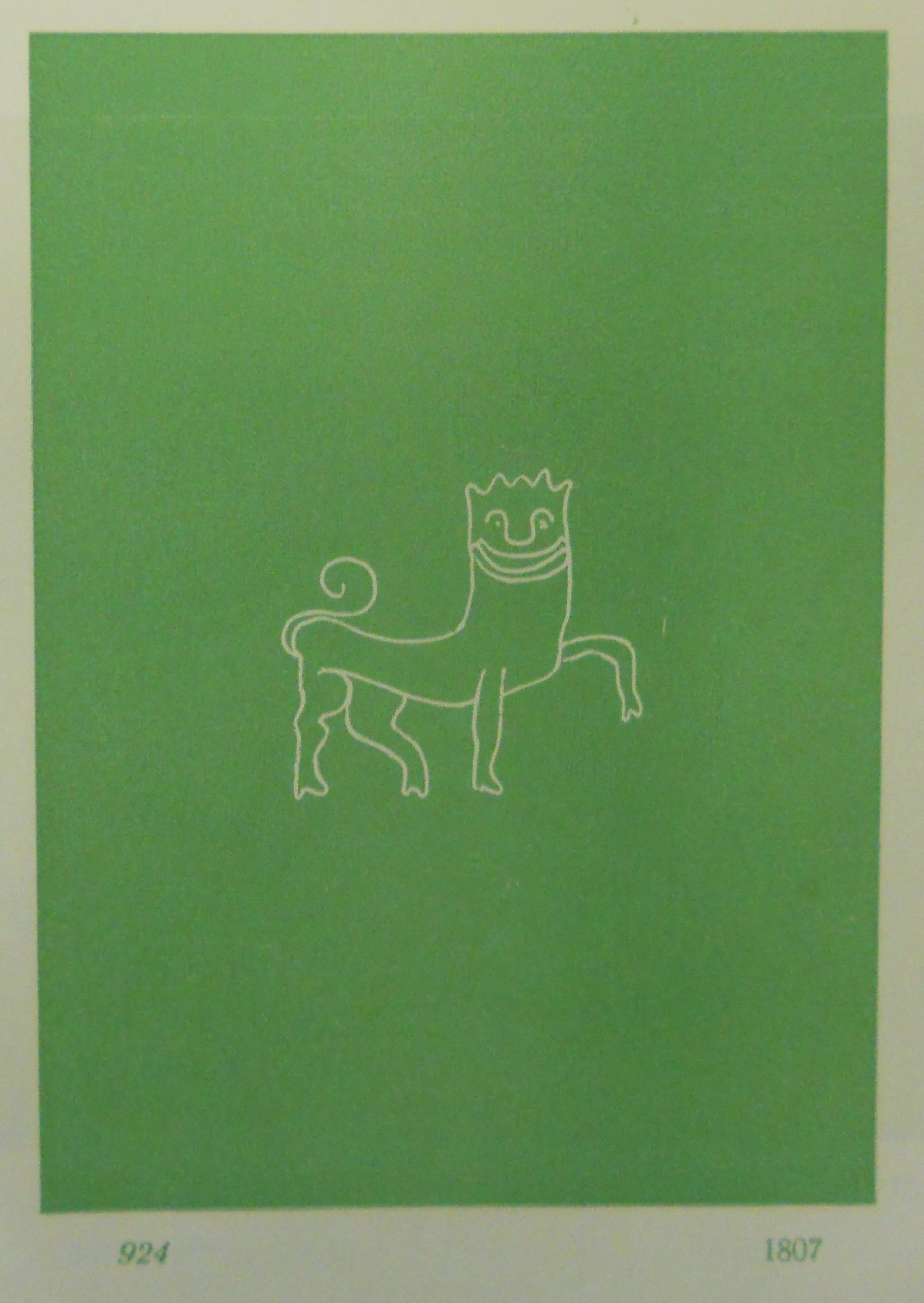
Lion passant guardant watermark, no. 924 in Nikolaev's Watermarks of the Mediaeval Ottoman Documents in Bulgarian Libraries (Sofia 1954).
A few other papers with lion passant guardant watermarks appear in the Islamic Manuscripts Collection, including the paper of a replacement section in Isl. Ms. 855. In this case, the mark appears with the letters "A F G."
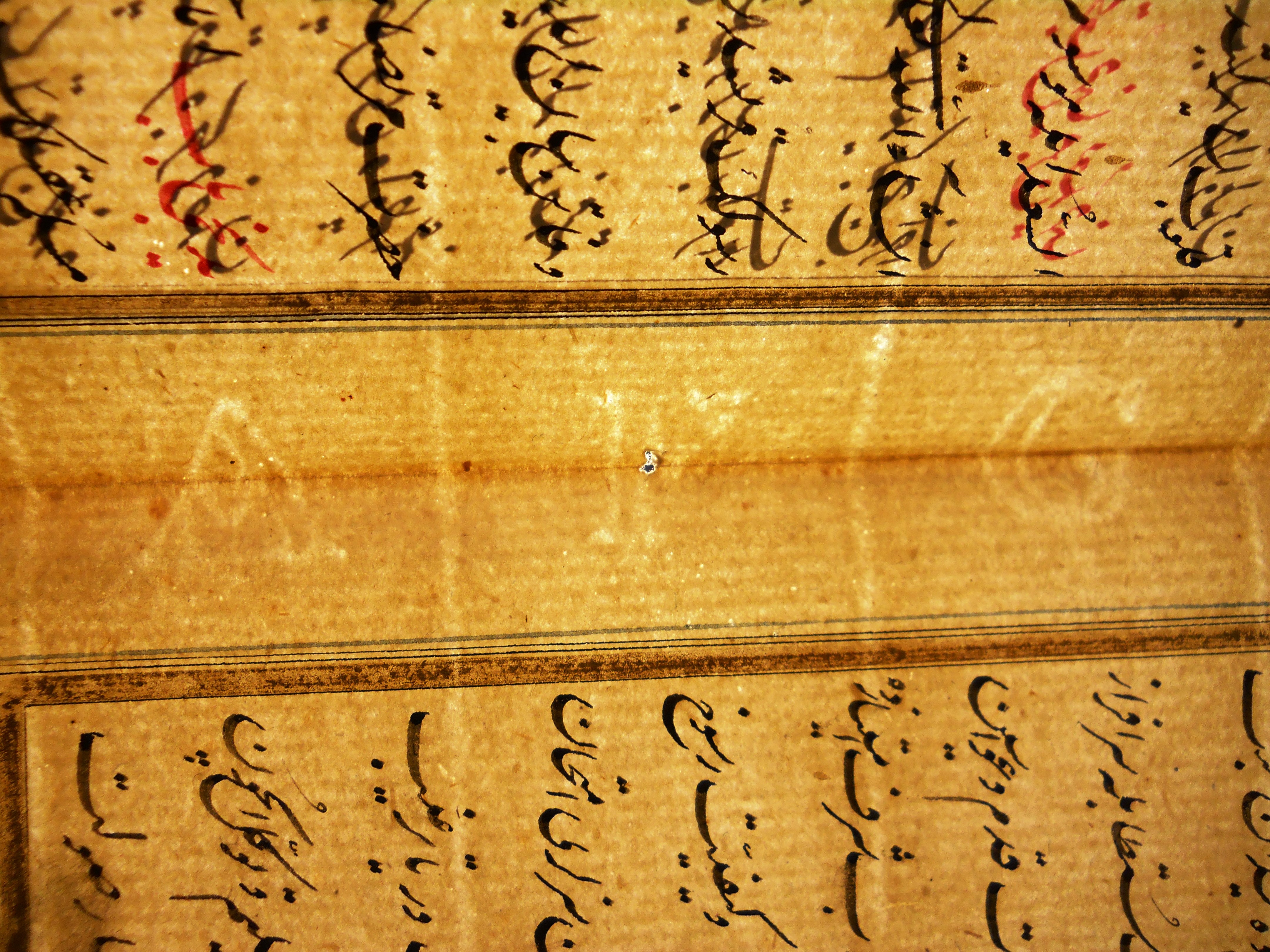
"A F G" watermark in Isl. Ms. 855 across the fold of p.2/11.
The section is undated, but somewhat similar marks in Eineder (such as no.997 dated 1807) suggest a rough dating in the first decade of the 19th century.
Another undated example appears in the back flyleaf of Isl. Ms. 463 v.2, likely contemporary with the later addition of a replacement section and rebinding. In this case, the lion appears to be grimacing rather than smiling, while in stride across a patch of ground.
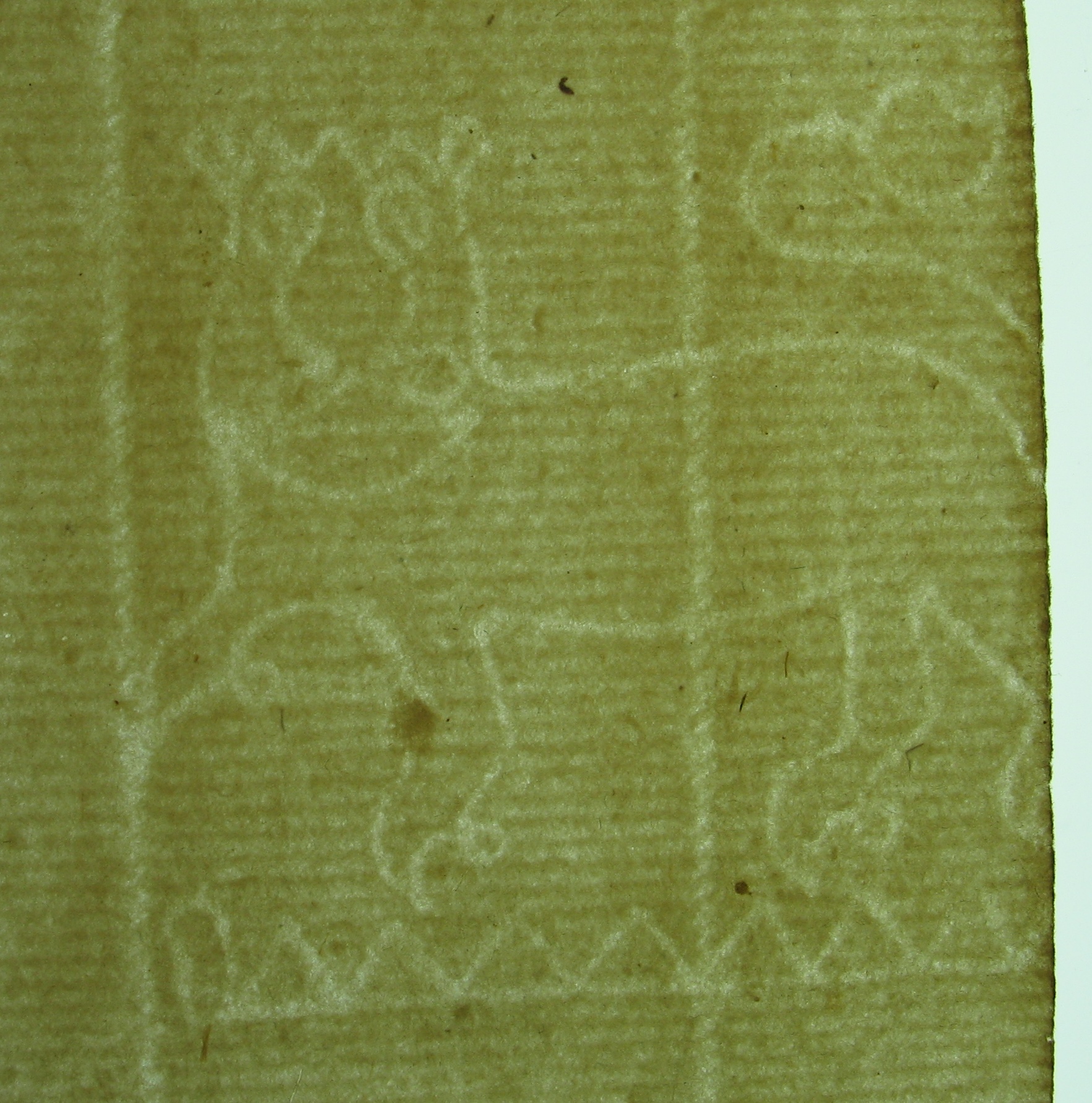
Lion passant guardant watermark in back flyleaf of Isl. Ms. 463v.2
A few other watermarked papers appear to have circulated commonly with these lion passant guardant papers, in particular tre cappelli (three hats) paper. More on that next Watermark Wednesday.
Until then, enjoy this "lion in summer"!
[1] See "The Watermarks of the Kingdom of Lombardy-Venetia," In Georg Eineder, The Ancient Paper-mills of the Former Austro-Hungarian Empire and their Watermarks, (Hilversum: Paper Publications Society, 1960): 174-5
[2] See nos. 980-1041 (plates 258-272) in The Ancient Paper-mills of the Former Austro-Hungarian Empire and their Watermarks.
[3] Of course full-figure lion motifs appear in numerous other forms and attitudes in watermarks, particularly as part of coats of arms / scrollwork marks. These lions are mainly depicted in profile standing up with front paws raised (rampant). Many earlier marks featuring free-standing lions are also rampant. See Briquet (Les Filigranes, v.III, p.539 ff.) for examples.
[4] Nikolaev, Vsevolod. Watermarks of the Mediaeval Ottoman Documents in Bulgarian Libraries. Watermarks of the Ottoman Empire, Volume 1. Sofia: Bulgarian Academy of Sciences, 1954.